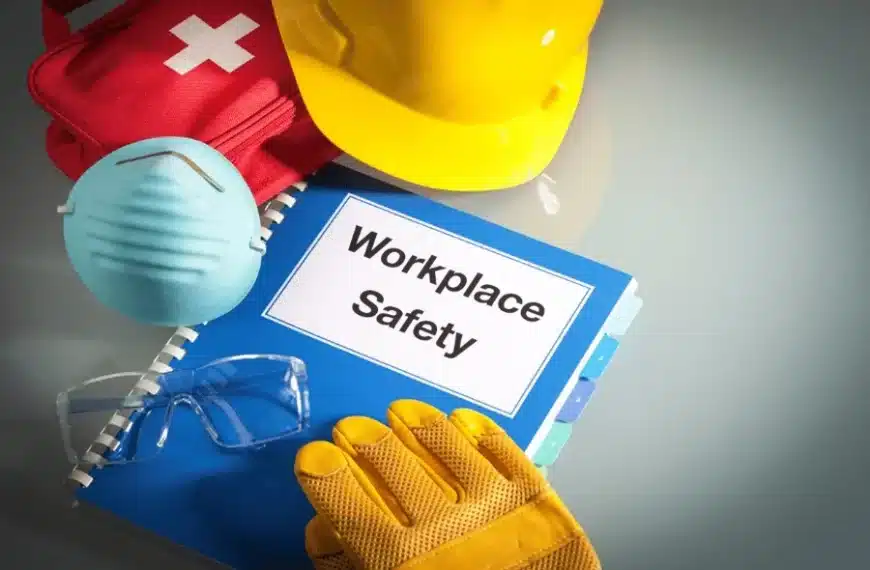A lot of people think safety at work means having the right gear. High-vis jackets. Hard hats. Gloves. Safety signs stuck on every wall. It looks good. Feels safe. But here’s the truth: equipment alone doesn’t cut it.
The Limitations of Equipment-Only Safety
Equipment helps, no doubt. But it’s not magic. It doesn’t stop accidents on its own. People still get hurt even when all the right tools are in place.
Some gear breaks down. Some gets used the wrong way. Sometimes it’s just not enough. Machines don’t think. People do. When people don’t pay attention or don’t care, no kit in the world can fix that.
Maintenance Gaps and Human Error
Take a harness, for example. Looks fine, hangs on the wall. But if no one checks it, it might snap under pressure. That’s not the equipment’s fault. That’s a gap in the system.
Or a worker grabs the wrong mask for the job. Not because there wasn’t one. Because they didn’t know better. Or didn’t care. Human error creeps in when systems fall short.
Equipment Can’t Replace Risk Culture
Safety isn’t just about stuff. It’s about people. Mindsets. Habits. If the culture’s weak, accidents wait around every corner.
A workplace might have top-level gear but still face daily risks. Because no one speaks up. Because shortcuts are normal. Because rules exist on paper only.
Building a Culture of Safety
Real safety starts with how people act. Not what they wear. It’s about what they do when no one’s watching.
Culture sets the tone. If safety’s treated like a tick-box job, workers follow that lead. But if safety’s part of every task, it sticks.
Leadership Responsibility
Bosses set the bar. If they follow rules, so does everyone else. If they skip steps, expect the same from the crew.
Leaders must talk safety daily. Show it matters. Not just in meetings. On the floor. In how they act. What they fix. What they notice.
Worker Involvement
Workers know where the real risks are. They use the tools. They know the blind spots. If they’re ignored, small problems grow big.
But when staff get involved, things shift. They spot hazards. Raise issues. Offer ideas. Safety becomes part of the job, not an extra task.
Essential Elements of a Truly Safe Workplace
A safe site isn’t built with just helmets and gloves. It’s built with systems that run every day. Not just when inspections roll in.
1. Risk Assessments
Hazards change. So should risk checks. Regular reviews catch problems before they harm.
2. Clear Communication
No jargon. No guessing. Clear steps. Straight talk. That’s how safety instructions should be.
3. Proper Training
No worker should guess what safe looks like. They need real training. The kind found in trusted health and safety courses. Not once a year. Ongoing.
4. Incident Reporting and Learning
Near-miss? Report it. Minor slip? Log it. Every close call holds a lesson. Ignored lessons come back harder.
5. Supervision and Enforcement
Safety rules mean nothing if no one checks. It’s easy to skip steps when no one’s watching. It starts with one small thing. Then another. Before long, the whole system’s loose.
Regular checks keep things sharp. Spot what’s slipping. Fix it fast. Not every inspection needs a clipboard. Just someone paying attention. A manager. A team lead. A sharp-eyed worker. Anyone.
Enforcement doesn’t mean barking orders. It means follow-through. Say what needs doing. Make sure it’s done. That’s how habits stick.
6. Health and Wellbeing Support
People aren’t machines. They burn out. Get stressed. Lose focus. And when focus drops, risks rise.
Fatigue makes people miss steps. Stress makes them rush. Worry makes them careless. That’s not weak. That’s human. A safe workplace sees that.
Support matters. Time off. Mental health help. Quiet spaces. Simple stuff that shows the job cares. Workers who feel looked after work safer.
The Role of PPE Safety Awareness in Industry
PPE safety in industry training plays a big role. It provides an essential awareness of the use of helmets, gloves, masks, boots and other PPE needed to do the job safely.
But only when people know what to wear. When to wear it. How to wear it. PPE isn’t protection if it’s left in a locker. Or worn wrong. Or chosen badly.
Training helps here too. So does making PPE easy to get. Easy to understand. Not a hassle. Not something to dodge.
How to Measure Safety Beyond Equipment
How safe is safe? That’s hard to measure. But there are signs.
Do staff speak up when things go wrong? Are near-misses logged? Do new hires get full training? Do old staff get refreshers? Are people confident about what to do in a crisis?
Paperwork doesn’t give answers. People do. Look at behaviours. Listen to what’s said. Watch what’s skipped. Safety lives in the small things.
Tracking Trends
Keep records. Look for patterns. Are some tasks causing repeat issues? Is one area seeing more slips or strains? That data shows where change is needed.
Don’t just file the numbers. Use them. Share them. Let the team see what’s going on. That brings them in. Makes them part of the fix.
More Than Helmets and Hi-Vis
Safe workplaces aren’t built in a day. And not built with gear alone. It takes attention. Action. Honesty.
Gear is a piece of the puzzle. An important one. But it’s people who complete the picture.
When staff feel safe to speak. When managers listen. When training is real. When PPE fits right. When wellbeing isn’t ignored. That’s when safety means something.
It’s not a product. Not a one-time job. It’s daily work. From everyone.
And it’s worth it. Every time someone finishes a shift without harm. Every time a near-miss teaches a lesson. Every time safety becomes second nature. That’s the payoff. That’s the goal. Always.









